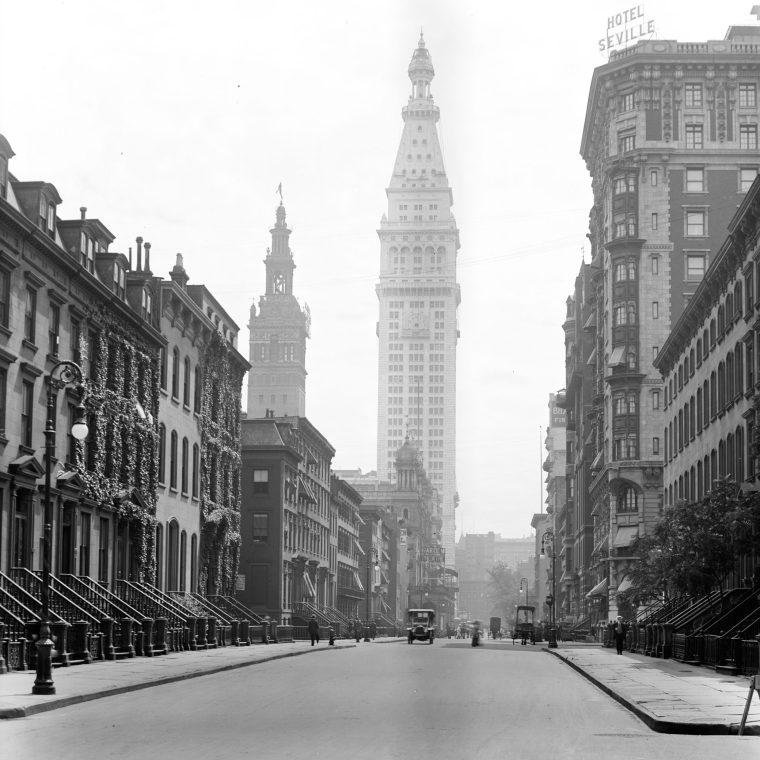The picture above, taken around 1909-1910, is titled “Madison Avenue and the towers, New York, N.Y.” at the Library of Congress. It’s one of those great shots that captures a moment of change: the quiet residential street of brownstones would be rebuilt within fifteen years as lofts and office buildings as development spread outward from Madison Square Park. “The towers” are the tower of the second Madison Square Garden on the left (the dome-on-column cupolas facing Madison Avenue are the front of the building) and the Metropolitan Life tower on the right.
The first MSG was a railroad storage building between 26th and 27th Streets facing Madison Avenue and diagonally across from the park, converted to arena use in the 1870s and, to say the least, architecturally uninteresting. The 1890 replacement on the same site, the building seen in the photo above, was designed by Stanford White, had a little bit of everything: the big arena, a theater, a concert hall, a restaurant, and a roof garden. (It was replaced by a more ordinary arena on Eighth Avenue, which was replaced by a structurally-interesting arena built on the site of the demolished Penn Station.) The tower of the second building was largely for show – it had some office space, but it was there because White wanted it – and at over 300 feet high, it was visible from a long way off. The tower was structurally very much like the kind of church bell tower it was modeled after, and had thick masonry bearing walls. When I say church bell tower, I mean specifically the tower at the Seville cathedral, which White copied several times in his designs. That may (or may not, who knows?) explain the name of the 1904 steel-framed hotel on the right, as there is little at 29th Street and Madison to remind anyone of Seville. (The hotel is still there. In the late 80s, I worked in a 1910s loft building across the street that had been converted to office space; at that time it was the Carlton Hotel, it’s now the James New York – NoMad.) The tower in Seville is slightly taller than the MSG tower was, so White built a scaled-down version of the original.
The 1909 Met Life Building is more than twice as tall and has some very fancy steel framing inside. It’s just being finished here: note the scaffold in front of the clock face, presumably to attach the hands. It also was specifically modeled after a European prescient: it’s a scaled-up version of the Campanile di San Marco in Venice. This is where the story gets slightly weird. First, to give scale, the original campanile is just about the same height as the tower of Madison Square Garden. More importantly, at the time that Met Life was built, there was no campanile. The original was constructed in the twelfth century and partially rebuilt and altered several times, before collapsing rather abruptly in 1902. It was reconstructed and eventually rededicated in 1912. Here it is in 1911:

So at the time that Met Life was being constructed, the original was as well, and Met Life was finished first. Or, to put it another way, the world went from one Campanile di San Marco to none, to one, to two.




You must be logged in to post a comment.